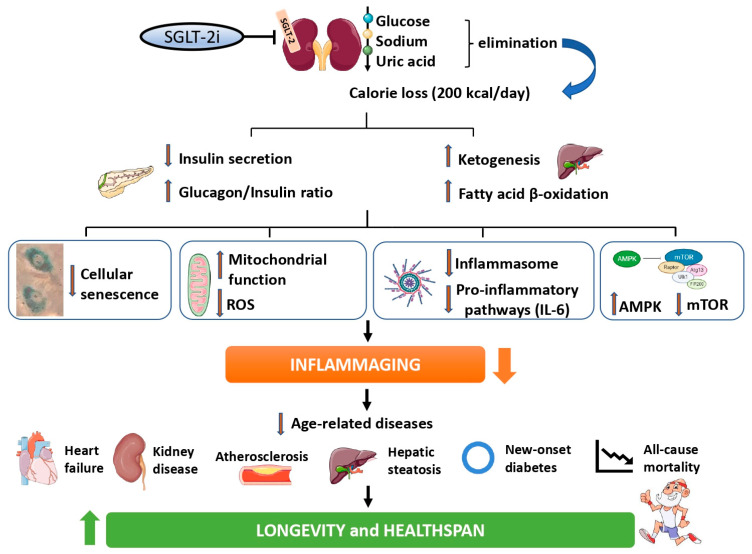Figure 1.
A graphical summary of the framework hypothesizing an anti-aging effect of SGLT-2i. SGLT-2i induce the elimination of glucose, promoting a loss of roughly 200 Kcal per day, a phenomenon followed by a decrease in insulin levels and an increased glucagon/insulin ratio, which all together promote a shift from glycolysis towards fatty acids utilization and ketogenesis. This systemic metabolic and hormonal reshaping has been suggested to attenuate a range of pathways held to drive aging, including cellular senescence, the accumulation of ROS and mitochondrial dysfunction, the activation of inflammatory pathways including the inflammasome platform, and the overactivity of key nutrient-sensing proteins such as mTOR. These effects might cumulatively ameliorate inflammaging at the systemic level, and a lower degree of low-grade inflammation could benefit a large range of age-related outcomes, including cardiovascular diseases, kidney disease, diabetes development, hepatic steatosis, and all-cause mortality, ultimately promoting healthy longevity.

